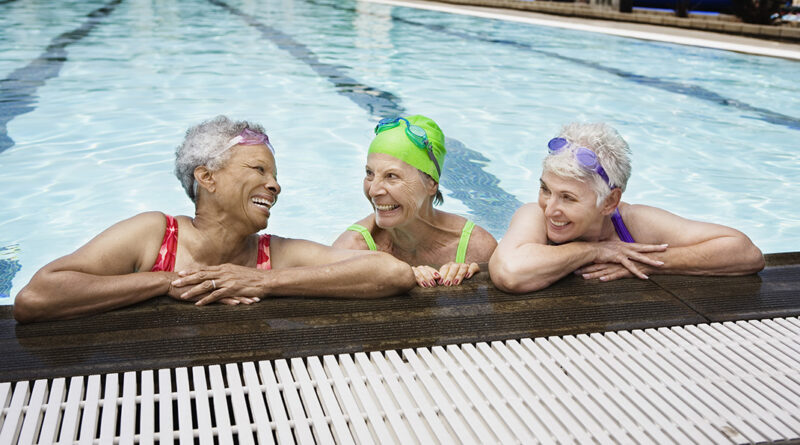Why Learn to Swim
If you never learned as a kid, you have plenty of reasons to learn now
By Deborah Jeanne Sergeant

Did you have a traumatic experience the first time you tried swimming, such as a near drowning or an adult tossing you into a lake?
For some people, this results in an abiding fear of water or at least a lack of interest in learning to swim.
But if you still don’t swim, learning how is not only possible but advisable.
Fear of the water is what prevented Fred Wilson, 82, from learning to swim as a youngster. Wilson owns Fitness After 50 and works as a senior fitness-certified trainer in Syracuse. He also teaches adult swimming lessons — something he likely could never imagined as a younger person.
Wilson nearly drowned as a child and stayed out of the water for decades. In 2004, he learned how to swim in his 60s.
“When I became certified in 2004 as a personal trainer, I decided I wanted to be at least an average swimmer,” Wilson said.
He signed up for lessons at the YMCA with an instructor experienced with people who had water fear issues. Wilson wanted to learn the six or so basic swimming strokes.
“I felt wonderful while I did it and after,” he said. “I had good circulation. I got interested in it and became a swimming instructor. I’ve taught a number of adults how to swim, particularly those who are afraid of the water as I was.”
He believes that swimming is an important life skill.
“It’s important to be safe in the water,” Wilson said. “The fear of water takes a while to overcome. You can start in four feet of water learning how to tread water.”
Whether to save your life or that of a grandchild’s or other family member, learning to swim well can be lifesaving.
Wilson also likes the notion of grandparents setting a good example and swimming with their grandchildren.
Swimming can also prove life enhancing. Wilson views swimming as a full-body form of exercise.
“When I go swimming, I do every single stroke,” he said. “Each stroke is a different form of exercise. Swimming uses every muscle in your body. That is highly beneficial, especially to an older person. You want to get muscles going. The range of motion is improved because you have to move your joints in ways you ordinarily don’t.”
Since it’s not weight bearing, it’s not as beneficial for preventing osteoporosis, but it does strengthen muscles. Wilson also noted that swimming can increase coordination but with reduced risk of falling associated with many land-based exercises.
Many fitness endeavors can become more challenging as arthritis, old injuries and overall stiffness sets in with aging. The water’s warmth and buoyancy ease joint movement and lowers the load on joints.
“Let’s be honest–it’s not easy to get older,” said physician John F. Parker, who practices at Syracuse Orthopedic Specialists. “But we know that exercise is like a high-yield savings account for the brain and body. It’s great for cognition, mental health, and overall physical fitness. And swimming is unique in that it provides strengthening, balance, muscle control, and also consistency, and all with minimal impact on aging or arthritic joints.
“In addition, there is a definitive social aspect to swimming, as any swimmer will quickly tell you, and social connectedness is the most crucial factor contributing to longevity.”
Whether swimming with family and friends at home or the lake or going to a public pool, swimming brings people together.
“Learning to swim in adulthood, or adding swimming to an existing fitness regimen, is a great way to add cardiovascular fitness, strength, longevity, and even happiness at a crucial time of life,” Parker added.
Swimming can remain a vital activity for life. Brian Wilcox, aquatics director at Webster Aquatic Center, has noticed that many of the pool clientele is “retirement age” during the water fitness classes and open swim times.
“We have one who’s 94 in one of the classes,” Wilcox noted. “She’s super active. Swimming gets people off the couch. If they have trouble walking on land, they can do it in the pool. They can walk in the shallow end. We also have water belts–a ‘floatie’ for adults–so they can aqua jog with no impact.”
It may seem like it’s too late to learn; however, one of his swimming lesson participants was 86.
“Learning to swim was on her bucket list,” he recalled. “She almost drowned as a child, which made her fearful of learning before.”

